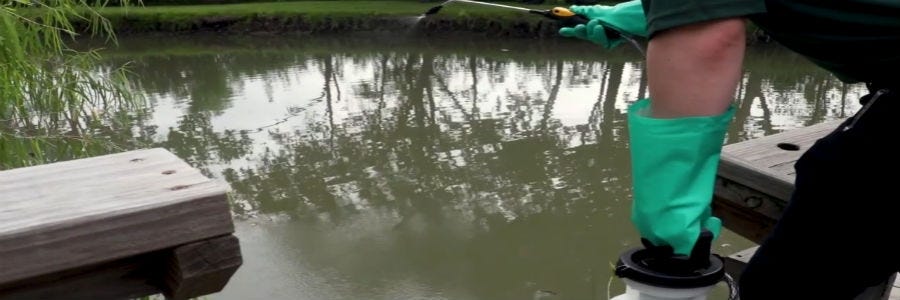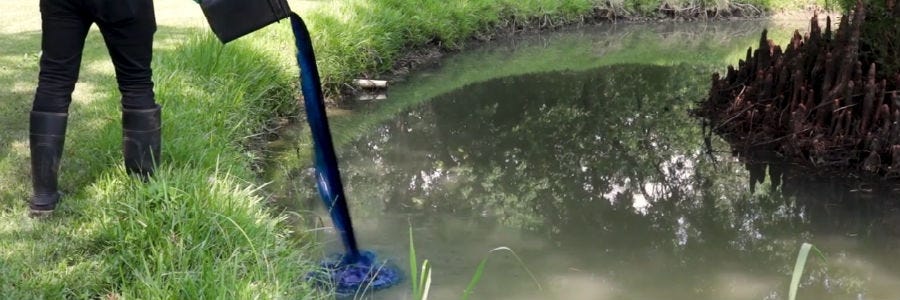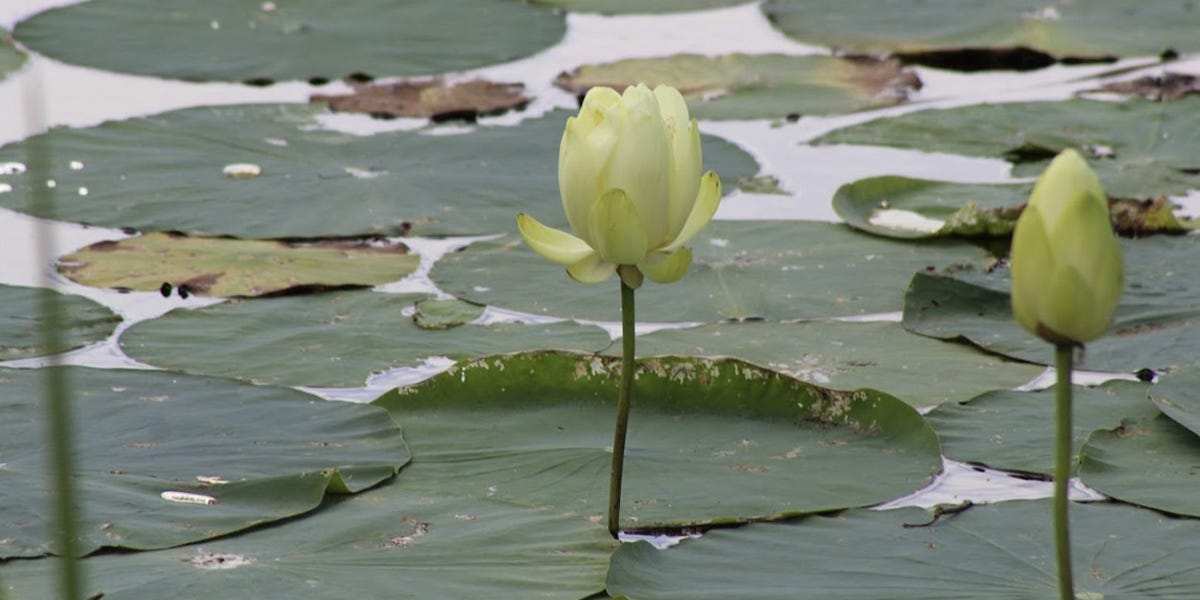American Lotus Control
Most Effective Products
American Lotus Control: How To Get Rid of American Lotus
If you've been to a local lake or pond to do some fishing or to go swimming with your family, you may have noticed during some parts of the year an aquatic plant floating among the surface of the water that appears to be a Water Lily except they may have a stem and a large pretty flower thats usually yellowish-white.
This aquatic plant is the American Lotus and while they can be nice to look at, they can grow out of control on a lake or pond and be a source of irritation, getting in the way of those wanting to fish or take a dip in the water and swim.
If you have an American Lotus problem on your aquatic property, this step-by-step DIY guide can help you in the form of effective aquatic herbicides and helpful how-to advice from experts.
Identification

The American Lotus is a perennial plant aquatic plant that is emergent, meaning that the plant sticks out above the water surface. Its leaves are open and round, ranging between 1 to 3 feet wide and are attached to a stem. They have rhizomes which slender, branched, and rooted in mud.
When floating in the water, the American lotus lays flat, but when they are emergent, they are cone-shaped. If left alone, the American Lotus can form large colonies and spread through the body of water where they reside either via seeds or their large fleshy rhizomes. When flowering, the American Lotus grows a large pale yellow flower usually containing 20 petals with a cone-shaped seed pod in the flower center.
These weeds can be hard to control without the proper product. Attempting to remove them by hand can be a difficult chore that will largely be ineffective because oftentimes the rhizomes will be left behind in the water. This eventually leads to new weeds sprouting and re-establishing themselves aggressively before long.
Using this description and image will help you to identify whether the weed growing in your pond is American Lotus. If you are having trouble ID'ing the plant, contact us and we will do our best to ID the weed you have and offer control suggestions.
Inspection

Where to Look
Walk around your lake or pond and determine how big of an American Lotus problem you have. American Lotus normally emerges in still or slow-moving waters, or in the quiet waters of ponds in eastern, central, and southern Texas, and most of eastern USA, during the warmer summer months between May and July.
What to Look For
If you have American Lotus on your pond, it's hard to miss it. Look for the large yellow flower that it blooms when mature or its large romaine-lettuce looking leaves that are attached to a stem.
Treatment
Before handling any chemicals it is vital that you first put on the proper PPE for safety (gloves, glasses, mask). Our top recommended product to treat American Lotus is 2,4-D Amine Selective Post-Emergent Herbicide. This product has a great track record in killing American Lotus and also can control a large range of aquatic and land weeds.
Step 1 - Mix and Apply 2,4-D Amine Selective Post-Emergent Herbicide

Determine how much 2,4-D Amine Selective Post-Emergent Herbicide you need by measuring your pond. For aquatic applications, you will need to calculate the surface area by measuring (in feet) the area length and width and multiplying the two values (length x width = surface area). You should also calculate the volume of your pond or water body by measuring and multiply length x width x depth.
For surface applications to ponds, the application rate is 2 to 4 quarts of 2,4-D Amine Selective Post-Emergent Herbicide per 100-400 gallons of water per acre. Do not exceed 8.42 pints per surface acre per use season.
Fill your sprayer halfway with water and then add in the appropriate amount of 2,4-D Amine Selective Post-Emergent Herbicide. Pour the remaining half of the water into the spray tank and shake until solution is evenly mixed.
Using a backpack sprayer or hand-pump sprayer, apply the mixed solution to your pond or lake during ideal temperatures (when water temperatures are about 50 degrees Fahrenheit, but not more than 90 degrees Fahrenheit during Summer or Fall months). Use a fan spray nozzle to ensure an even coating on the water surface so it thoroughly covers the American Lotus.
Step 2 - Follow Up Application

If the pond is heavily infested with American Lotus, it may be necessary to treat the pond or lake in sections and let each section decompose for about 21 days before treating another section. American Lotus can be a recurring problem so monitoring your water is key and repeated application is vital.
Prevention

To keep American Lotus from returning on your pond, we recommend applying Vision Pond Dye. Vision Pond Dye hinders plant development by blocking sunlight into the water and also gives your pond a clean blue color.
Measure the appropriate amount of Vision Pond Dye into a bucket based on your pond area measurement findings. The label recommends applying at a rate of 1 quart per 1 surface acre of water at a 5-foot average depth.
Pour the pond dye over the edge directly into the body of water and the water's natural movement will disperse the dye.
Key Takeaways
- American Lotus is an emergent aquatic weed known for hindering water recreation on ponds and lakes.
- Applications of 2,4-D Amine Selective Post-Emergent Herbicide has proven to work best against American Lotus and will kill growths quickly.
- Applying Vision Pond Dye after a herbicide application works as a great preventative measure that prevents American Lotus growth and improves the look of your pond.










































































































































































































































































































































































































































































































































